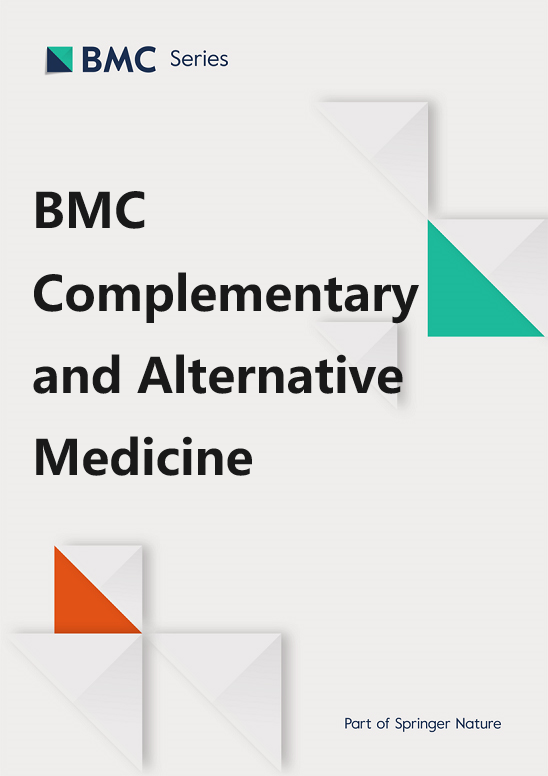Ammidin ameliorates myocardial hypoxia/reoxygenation injury by inhibiting the ACSL4/AMPK/mTOR-mediated ferroptosis pathway
IF 3.4
2区 医学
Q1 Medicine
引用次数: 0
Abstract
The aim of the present study was to investigate the therapeutic effect of ammidin on hypoxia/reoxygenation (H/R) injury in primary neonatal rat cardiomyocytes by observing the role of ferroptosis in the process of H/R injury, and to verify its target and regulatory signaling pathways. The network pharmacology analysis was used to predict the biological processes, core targets and related signaling pathways of Angelica dahurica in the treatment of ferroptosis. Cell viability was assessed using live cell imaging and cell counting kit-8. Lactate dehydrogenase (LDH), reactive oxygen species (ROS) production, and malondialdehyde (MDA), superoxide dismutase (SOD) and mitochondrial membrane potential (MMP) content were determined to assess the level of ferroptosis. Western blotting was performed to measure protein expression. Network pharmacology predicted that Acyl-CoA synthetase long chain family member 4 (ACSL4) was highly associated with myocardial H/R injury in the intersection of Angelica dahurica and ferroptosis. The top three active components of Angelica dahurica were found to be mandenol, alloisoimperatorin and ammidin, among which ammidin was found to have the strongest binding to the target proteins of the ACSL4/AMPK/mTOR pathway. H/R reduced the viability of cardiomyocytes, while the inhibition of ferroptosis by ferrostatin-1 alleviated the H/R-induced inhibition of cardiomyocyte viability. This was evidenced by the increased cell viability, SOD release, MMP level and glutathione peroxidase 4 (GPX4) protein expression, as well as the decreased LDH and MDA release and ROS production and ACSL4 protein expression (P < 0.05). To verify the existence of ferroptosis in myocardial hypoxia/reoxygenation injury. In addition, ammidin increased cell viability and GPX4 protein expression (P < 0.05), decreased ROS generation, and MDA and MTT expression (P < 0.05), then inhibited ferroptosis, and finally alleviated myocardial H/R injury by regulating the ACSL4/AMPK signaling pathway. Network pharmacology was used to predict the correlation between ammidin and ferroptosis following myocardial H/R injury. It was demonstrated that ammidin may regulate ferroptosis by inhibiting the ACSL4/AMPK/mTOR signaling pathway and reduce H/R injury in cardiomyocytes.氨酰胺通过抑制 ACSL4/AMPK/mTOR 介导的铁氧化途径改善心肌缺氧/复氧损伤
本研究旨在通过观察白芷在新生大鼠心肌细胞缺氧/再氧合(H/R)损伤过程中的作用,验证其靶点和调控信号通路,从而研究白芷对新生大鼠心肌细胞缺氧/再氧合(H/R)损伤的治疗效果。利用网络药理学分析预测了白芷治疗高铁血症的生物学过程、核心靶点及相关信号通路。使用活细胞成像和细胞计数试剂盒-8评估细胞活力。测定乳酸脱氢酶(LDH)、活性氧(ROS)产生量、丙二醛(MDA)、超氧化物歧化酶(SOD)和线粒体膜电位(MMP)含量,以评估铁中毒程度。还进行了 Western 印迹以测定蛋白质表达。网络药理学预测,在白芷和铁变态反应的交叉点上,酰基-CoA合成酶长链家族成员4(ACSL4)与心肌H/R损伤高度相关。研究发现,白芷的前三大活性成分为曼陀罗醇、异橙皮苷和氨酰胺,其中氨酰胺与ACSL4/AMPK/mTOR通路的靶蛋白结合力最强。H/R降低了心肌细胞的活力,而铁前列素-1抑制铁凋亡则减轻了H/R引起的心肌细胞活力抑制。这表现在细胞活力、SOD释放、MMP水平和谷胱甘肽过氧化物酶4(GPX4)蛋白表达的增加,以及LDH和MDA释放、ROS产生和ACSL4蛋白表达的减少(P<0.05)。为了验证心肌缺氧/复氧损伤中是否存在铁变态反应。此外,氨酰胺可提高细胞活力和GPX4蛋白表达(P<0.05),减少ROS生成、MDA和MTT表达(P<0.05),进而抑制铁变态反应,最终通过调节ACSL4/AMPK信号通路缓解心肌H/R损伤。研究人员利用网络药理学预测了氨酰胺与心肌H/R损伤后铁细胞减少之间的相关性。结果表明,氨酰胺可通过抑制ACSL4/AMPK/mTOR信号通路来调节铁突变,减轻心肌细胞的H/R损伤。
本文章由计算机程序翻译,如有差异,请以英文原文为准。
求助全文
约1分钟内获得全文
求助全文
来源期刊

BMC Complementary and Alternative Medicine
INTEGRATIVE & COMPLEMENTARY MEDICINE-
CiteScore
7.00
自引率
0.00%
发文量
0
审稿时长
3 months
期刊介绍:
BMC Complementary Medicine and Therapies is an open access journal publishing original peer-reviewed research articles on interventions and resources that complement or replace conventional therapies, with a specific emphasis on research that explores the biological mechanisms of action, as well as their efficacy, safety, costs, patterns of use and/or implementation.
 求助内容:
求助内容: 应助结果提醒方式:
应助结果提醒方式:


